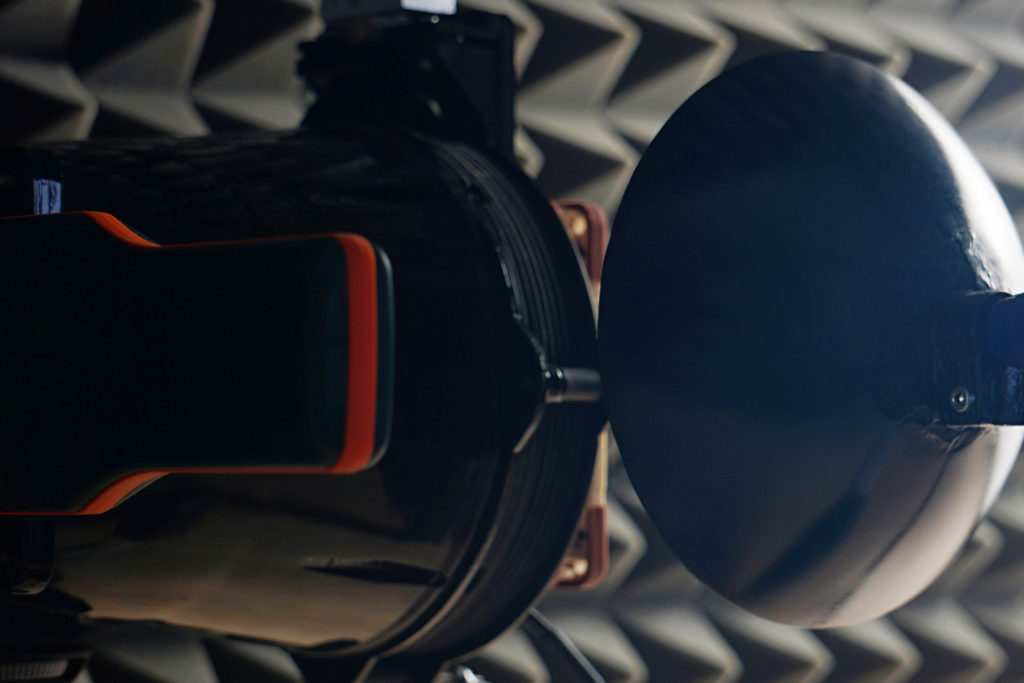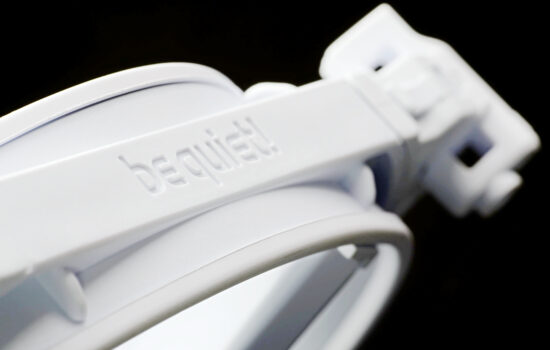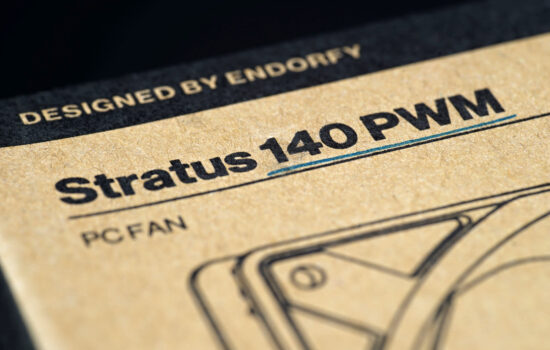Base 6 equal noise levels…
The biggest shortcoming of Arctic’s original P-series fans is the rumbling sound profile. The manufacturer realized this and decided to do something about it. Sensibly, by implementing a hoop to eliminate the critical vibrations that are the source of the annoying acoustic profile. The implementation turned out well, and already the P12 A-RGB shows how much quieter it is compared to the older P12 model. And the list of improvements doesn’t end there.
Base 6 equal noise levels…
There are several options by which to normalize the test modes for fans. In the previous chapter, we wrote that perhaps the least appropriate option is equal speed.
Settings according to the same static pressure or flow are for consideration, but we find it most sensible in the long term to normalize the measurement modes according to the same noise levels. Firstly because decibels are a logarithmic unit and all others scale linearly, but mainly because you can orientate fastest by the same noise levels. The easiest way to compare the efficiency of fans is just by how they perform at the same sound pressure level. Of all the options, this is the one that most people can best imagine and bounce off of when considering other variables.
The individual noise level modes are adjusted from low levels continuously to higher levels. All users will find their results in the tests, regardless of whether they prefer very quiet operation at the limit of audibility or whether high performance is paramount.
The quietest mode corresponds to 31 dBA, followed by 33 dBA, and for each additional mode we add 3 dBA, which always doubles the noise level (36, 39, 42 and 45 dBA). Finally, we measure the fans at maximum power. Here, each one already has a slightly different noise level, which we also report. If there are missing measurements between the results for any of the fans, this means that it was not possible to set the target noise level. Either because its minimum speed exceeds the quietest mode of 31 dBA or vice versa because the fan is quieter than 45 dBA at maximum power.
It is important to add that our noise level measurements are incomparable to the values quoted by the fan manufacturers in their specifications. One of the reasons is because we use a parabola-shaped collar around the sensor of the noise meter, which increases sensitivity. This is important in order to distinguish and set to the same noise level even modes at very low speeds, especially 31 dBA.
The noise meter next to the fan is quite close for sufficient resolution. The distance between the frame and the sensor is 15 centimeters. The sensor is positioned in such a way that there is no distortion or that the noise level measurements are not affected by airflow. Therefore, the noise meter is centered perpendicularly to the frame that defines the depth of the fan. Everything is always at the same angle and at the same distance. We use an inclinometer and markers to set the distances precisely and always the same.

We use a Reed R8080 noise meter to measure noise levels. This allows real-time averaging of samples, which is important for fine-tuning individual modes. We tune the fans until the specified noise level is reached to two decimal places, for example 31.50 dBA. The noise meter is the only instrument we calibrate inside our testlab. The other instruments have been calibrated by the relevant technical institutes. However, in the case of the noise meter, calibration is required before each test and we therefore have our own calibrator. This is already calibrated externally according to the standard.
- Contents
- Arctic P12 PWM PST A-RGB in detail
- Overview of manufacturer specifications
- Basis of the methodology, the wind tunnel
- Mounting and vibration measurement
- Initial warm-up and speed recording
- Base 6 equal noise levels…
- ... and sound color (frequency characteristic)
- Static pressure measurement…
- … and airflow
- Everything changes with obstacles
- How we measure power draw and motor power
- Measuring the intensity (and power draw) of lighting
- Results: Speed
- Results: Airlow w/o obstacles
- Results: Airflow through a nylon filter
- Results: Airflow through a plastic filter
- Results: Airflow through a hexagonal grille
- Results: Airflow through a thinner radiator
- Results: Airflow through a thicker radiator
- Results: Static pressure w/o obstacles
- Results: Static pressure through a nylon filter
- Results: Static pressure through a plastic filter
- Results: Static pressure through a hexagonal grille
- Results: Static pressure through a thinner radiator
- Results: Static pressure through a thicker radiator
- Results: Static pressure, efficiency by orientation
- Reality vs. specifications
- Results: Frequency response of sound w/o obstacles
- Results: Frequency response of sound with a dust filter
- Results: Frequency response of sound with a hexagonal grille
- Results: Frequency response of sound with a radiator
- Results: Vibration, in total (3D vector length)
- Results: Vibration, X-axis
- Results: Vibration, Y-axis
- Results: Vibration, Z-axis
- Results: Power draw (and motor power)
- Results: Cooling performance per watt, airflow
- Results: Cooling performance per watt, static pressure
- Airflow per euro
- Static pressure per euro
- Results: Lighting – LED luminance and power draw
- Results: LED to motor power draw ratio
- Evaluation













This is a good study of the effect of rings. The blades are a bit shorter so there’s less airflow at the same noise level (despite higher static pressure), but it suppresses blade vibrations very effectively, improving the noise profile for fans using flexible blades.
I am thinking that the increased static pressure may be partially be due to the increased hub size. It was mentioned by Noctua that the inner parts of the blades have less efficiency, and may even allow air to flow back, so an increased hub size may actually contribute to better static pressure. I think the Gentle Typhoon-like fans all have very similar, large motor hub size because of this.
It’s also interesting to see that the official static pressure spec vs. the one you measured varies by so much between the P12 and the P12 ARGB. The official spec has the P12 having higher static pressure being higher than the ARGB version, yet it is opposite here.
The rotor looks pretty much identical to that of the P12 Max, the other minor difference is the ribs in the stator. Are there any differences apart from blade material and the bearing (aside from RGB?) Perhaps this is the budget fan to get if you want to avoid the dual ball bearing noise of the P12 Max, even if you do not want or need RGB.
Well, the best study would be with P14 rev. 1 vs. rev. 2, if the same motor is used across revisions and the only difference is really in the (non)presence of the hoop.
As for the comparison of the paper specifications of the P12 and P12 A-RGB, I really don’t see the technical reason why the static pressure of the P12 at the same speed should be higher by… what, 25%, when at a speed lower by 200 rpm it should be +19%? It makes sense to me the other way round. Of course, a higher static pressure is indirectly caused by the larger hub, if only because it leaves a smaller empty area between the blades. The smaller the fan format, the higher the static pressure per unit of airflow. With the P12 A-RGB, the hoop itself also increases the overall pressure (i.e. static pressure as well) to a certain extent, as I mentioned in the article.
Anyway, I don’t like to dwell on these things about official parameters. The last thing we want is to have unnecessary back-and-forth with some manufacturer about what they state in their materials. That’s not really the goal, but in this case it couldn’t be completely avoided in the text. Things must always be as clear as possible, that’s what we pride ourselves on. And for the Arctic P12 to have a higher static pressure at the same speed compared to the NF-A12x25, well… 🙂
Noctua has now reduced the hub size for 140mm LCP fans. From internal communication with their representative we know that it is mainly for better optimization of the Centrifugal Turbulator with the unconventional curvature of the blades. Due to the smaller hub, the part of the blades before the curve (i.e. the typical critical part where aerodynamic efficiency decreases) should catch more air streams.
Would be nice to have the P12 CO variants in there as well as an additional reference.
I got some P12 Max’s but was disappointed with the overall noise distribution so I returned them (they definitely moved a lot of air but they were considerably noisier across the entire rpm range compared to the P12 CO’s I had, and one was particularly noisy when placed on a radiator – maybe I got a bad early batch).
I have had regular P12’s before with that hum in the 1000-1100rpm range, but not had a CO variant with that hum before, though obviously limited sample size.
We will add the CO variants, but the closest will be P14 (P14 CO vs. P14), to give a little kick to the building of the 140 mm fan database. We have very few of these in comparison and maybe less than half a year left until the release of Noctua 140mm LCP fans. And of course we want to be adequately prepared for them, i.e. with a sufficiently large reference sample of other fans. But the P12 Max with ball bearings will be added to the tests.
I was able to find the exactly same enhancement from P14s. Unlike the original P14, P14 ARGB has very weak resonant noise at some RPM points and no RPM range that generates a tonal peak. Also the overall noise profile is much better than P14.
As you mentioned, I also think Arctic’s solution is very cost-efficient way to resolve the unintended vibration of impeller. Everyone knows that the better way is using LCP material, but then the price and difficulties of manufacturing becomes the main problem.
Although there are some small downsides of this solution(i.e. Increased a moment of inertia of a rotor and slightly smaller area of blades.), I hope the company apply a rotor frame to other models such as P12/P14 PWM PST.